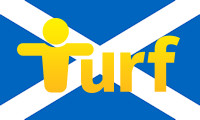One might think that the humble bicycle was designed entirely with the needs of Turf players in mind. Economical to run, fairly inexpensive to purchase (but not always) and perfectly suited for the task of zipping between different locations to take a zone or two or even fifty. However, there are many different types of bicycle and on this page I want to take a personal look at what makes the ideal turfing bicycle.
If you are looking for a bicycle with turfing in mind, perhaps the first thing to consider is what does that bicycle actually need to do? Well, it’s main task will be transporting you between the many zones you plan to visit and take. It needs to be reliable, it should have some degree of comfort if you intend spending long hours in the saddle and it needs to cope with the conditions where you are planning to take your zones.
Most zones are located in urban areas, so your bicycle will need to deal with typical urban streets, footpaths and the like and that includes lovely smooth tarmac, not-so-lovely pot-holed tarmac, graded gravel paths, perhaps the occasional broken glass, sunken manhole covers, other assorted urban trash and not forgetting those lovely bone-shaking cobbles. You may also venture off-road onto rough dirt tracks, grassy trails and cross-country routes as well.
There is an old saying that the ideal bicycle for the job in hand is the one your already have. However, if that’s a full-suspension downhill mountain bike it’s not going to be ideal for our needs, neither would a skinny-tyre drop-bar racing bicycle or a stripped to the bone, fixed wheel single-speed. Yes, all will do the job but are far from ideal. It really depends on what you are prepared to put up with. Personally, I think a general purpose or hybrid-city bicycle is the way to go and I’ll illustrate that with my own preferred bicycle, the Surly Ogre, seen in the image above.
I built the Ogre from the frame up, specifically for multi-terrain use. I wanted something that would manage urban streets with ease but also be capable of venturing off-road as well. So, what makes it ideal for turfing? The first thing is that it’s a 29’er with large wheels suited to rolling over the lumps and bumps of urban streets and is fitted with 28″ x 2.0″ Schwalbe Marathon Dureme tyres which are comfortable, fast running and have good puncture protection, using Smartguard, a 5 mm thick highly elastic special rubber strip that help prevent punctures. Schwalbe Marathon Dureme tyres are difficult to find now but the Schwalbe Marathon E-Plus 28″ x 2.00″ or the cheaper Schwalbe Marathon Plus 28″ x 1.75″ would be good alternatives.
The inner tubes have a Finish Line Kevlar-based tyre sealant for additional puncture protection. I use this sealant as it does not dry out like the latex-based sealants. One problem I found with the latex-based sealants is that the tube valves can get gummed up making adding air to the tyres very awkward. And don’t forget the rim strips, always go for good quality as cheap ones can degrade over time.
The frame allows me to mount mudguards, front and rear racks and a frame bag which means I can carry everything I need on the bicycle and not on my back. You might not think that makes a difference but after a long days riding, it really does. Additional capacity is provided by the rear trunk when required and tends to get used for food, flask and spare clothing. The frame bag is ideal for spare inner tube, tool kit, water bottle and so on. Gearing comes from a Shimano Alfine 8-speed IGH (Internal Hub Gear). Yes, not the normal but never needs adjusted, runs forever, and you can change gear while stationary.
In the cockpit, the handlebars are from Alpkit, with the cool name of Love Mud Confucius. They come with a central loop that takes Alpkit’s Drop Bear handlebar bag and also offers plenty of room for twin LED lights, mobile phone mount, ding-ding bell and so on. Handlebar grips are GP1 from Ergon.
When purchasing a bicycle, you really do get what you pay for. A cheap bicycle may not be as reliable as a more expensive one. My advice is buy the best you can afford and keep it well-maintained. And don’t forget essential spares such as pump, spare inner tube, tool kit and a puncture repair kit as well. And finally, there’s no point carrying tools and spares if you don’t know what to do with them.
Copyright ©2020 Gary Buckham. All rights reserved.


